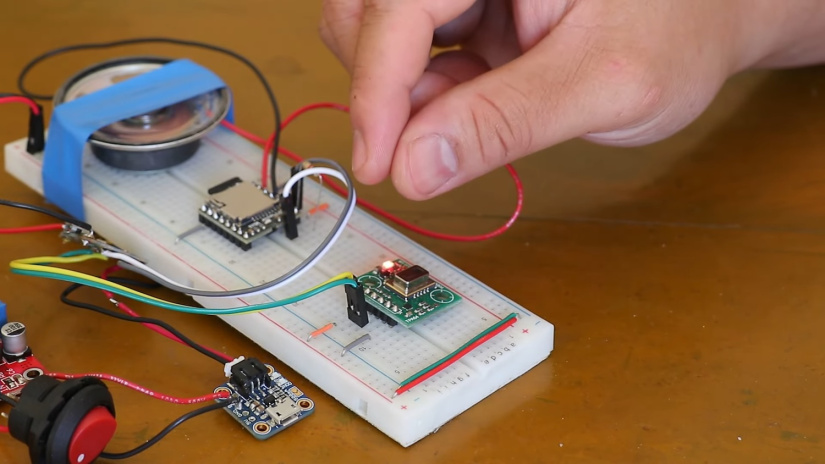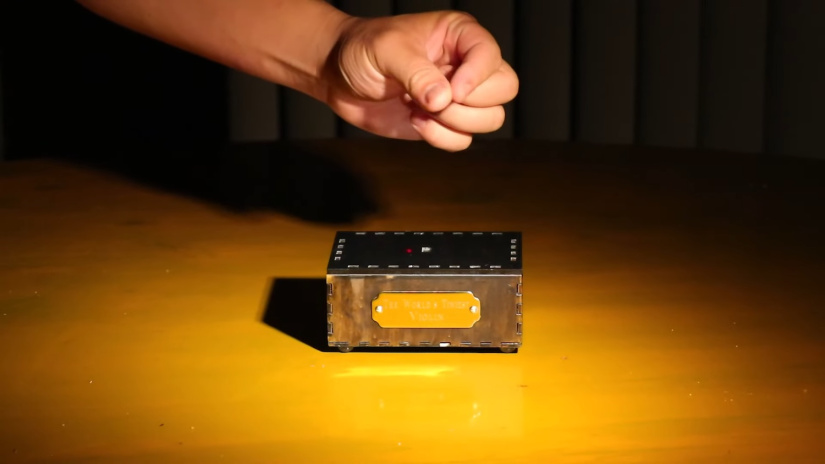Play the world’s tiniest violin using a thermal sensor
A creative project that brings the famous "Mr. Krabs Tiny Violin" meme to life with hands-free control! This build captures the humor of the iconic SpongeBob scene while showcasing the technical prowess of DIY electronics.
Inspired by a well-known SpongeBob SquarePants scene, this project allows users to "play" the world’s tiniest violin without even touching it. Using a thermal sensor to detect motion and trigger sound, this build brings the meme to life in an interactive and amusing way.
The Idea Behind the Project
The inspiration for this project comes from the infamous SpongeBob SquarePants episode where Mr. Krabs plays the tiniest violin to mock others' complaints. This memorable scene has since become an iconic meme. The idea behind this build was to take that scene and bring it into the real world, adding a novel twist by making the violin hands-free.
The concept is simple yet clever: by using a thermal sensor, the violin can be "played" without any physical contact. The sensor detects finger movements, simulating how Mr. Krabs "plays" the violin in the meme, and the sound is triggered through a WAV player. The result is an interactive and amusing take on a beloved internet joke, blending technology and humor effortlessly.

Key Features of the Build
The heart of this project is its thermal sensor, which allows for hands-free interaction. The sensor detects the heat from fingers, simulating the act of playing the violin without any direct touch. This innovative approach is what truly sets the project apart, making it a unique and engaging build.
To bring the sound to life, a WAV player is used. The sound files are pre-recorded and play whenever the thermal sensor detects movement, ensuring a responsive, real-time interaction. The combination of the sensor and the sound system gives the project both functionality and a playful edge.
In terms of design, the project also features a carefully crafted aesthetic. A custom enclosure, resembling a miniature violin, houses the electronics. This attention to detail not only adds to the project’s visual appeal but also enhances its overall presentation, blending humor with craftsmanship in a way that’s as fun to look at as it is to interact with.

Demonstration of the Project
By waving fingers above the thermal sensor, the tiny violin sound is triggered, simulating the act of playing the world’s smallest violin, just like in the famous meme. The sensor picks up the movement without any physical touch, providing a seamless and interactive experience.
The project runs smoothly, with the sound playing immediately when motion is detected. This real-time responsiveness brings the meme to life in a fun and engaging way. The success of this build lies in its ability to blend humor with practical electronics, offering both entertainment and an impressive technical demonstration.
Insights from the Build
The process of creating this hands-free Mr. Krabs Tiny Violin involved experimentation with different sensors and sound modules before settling on the final design. This iterative approach allowed for testing and refining various components to ensure the project worked smoothly and consistently.
One of the key challenges was fine-tuning the thermal sensor to accurately detect finger movements while synchronizing the sound playback for real-time response. After some trial and error, these issues were resolved, resulting in a hands-free violin that met the maker's expectations.
In terms of aesthetics, the decision to laser-cut the violin’s case and incorporate brass plaques added a touch of elegance. This artisanal approach highlights the balance between functionality and design, making the project both a fun build and a visually appealing piece of craftsmanship.
Community Engagement
The Mr. Krabs Tiny Violin project was shared with the Electromaker community, specifically through the Discord server, where makers collaborate and exchange ideas. The project quickly gained attention for its humorous and inventive nature, sparking conversations among fellow makers.
Its feature in the Electromaker roundup video highlighted how even light-hearted projects can showcase serious technical skills. This build serves as a reminder that creativity and fun can go hand-in-hand with engineering, inspiring others in the community to take on similar projects.
Did you enjoy this article?
Make sure you subscribe to The Electromaker Show for similar content and subscribe to our monthly newsletter!














































